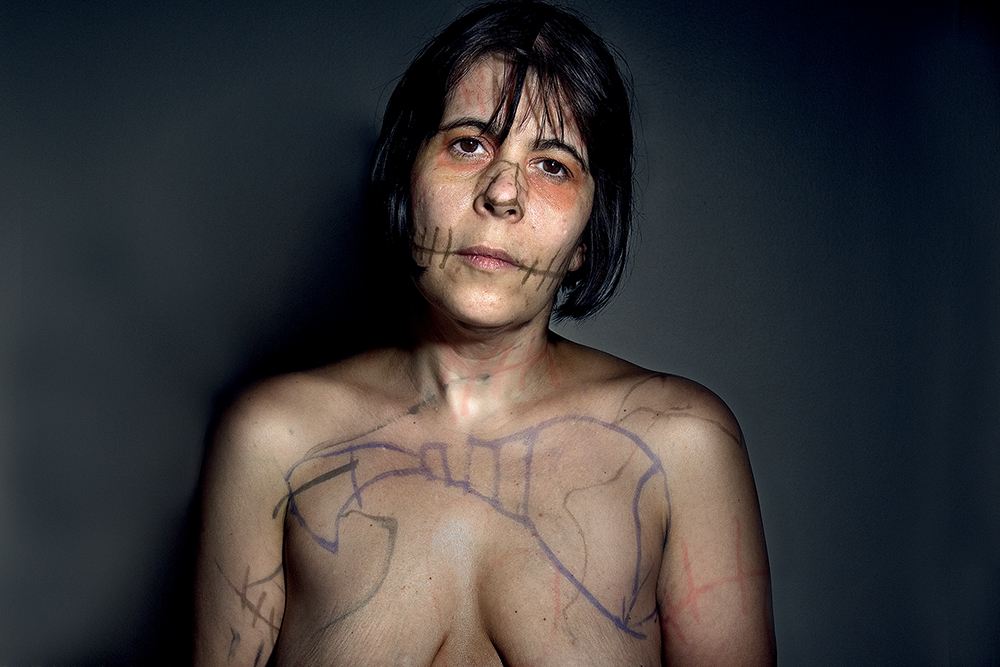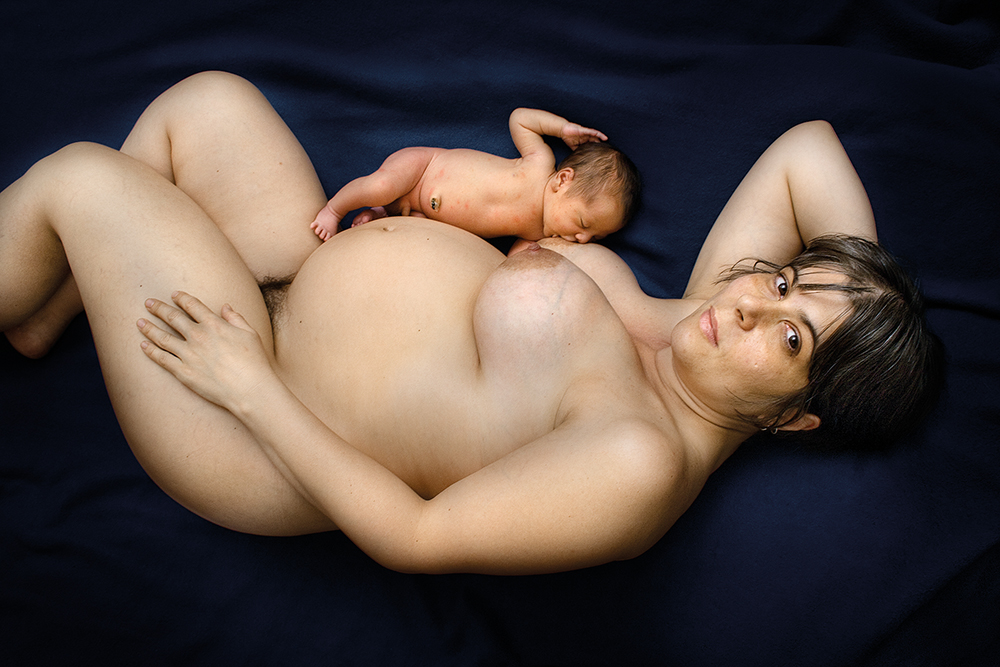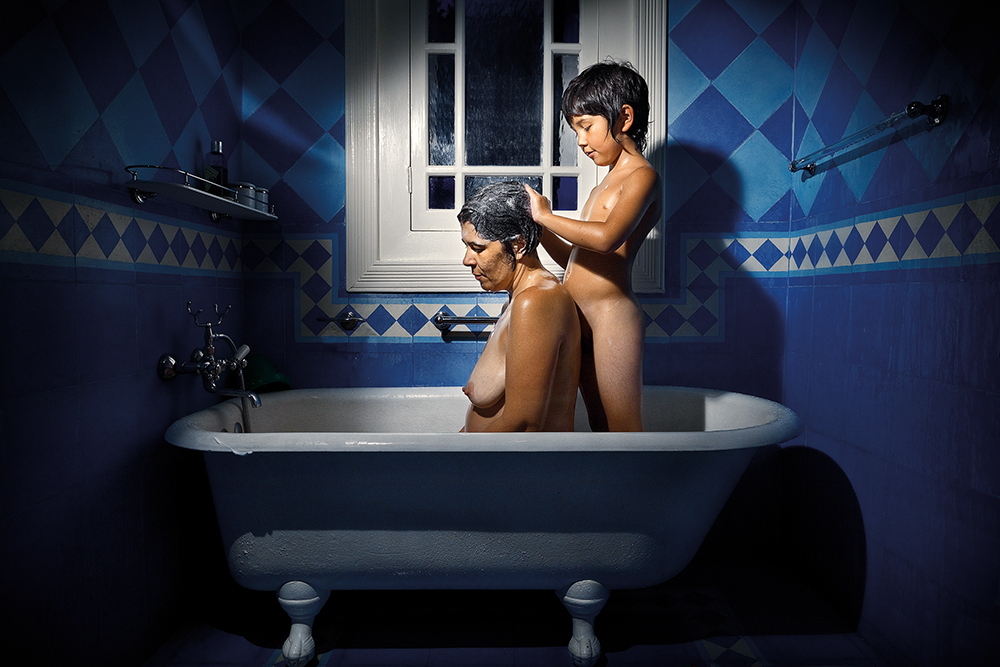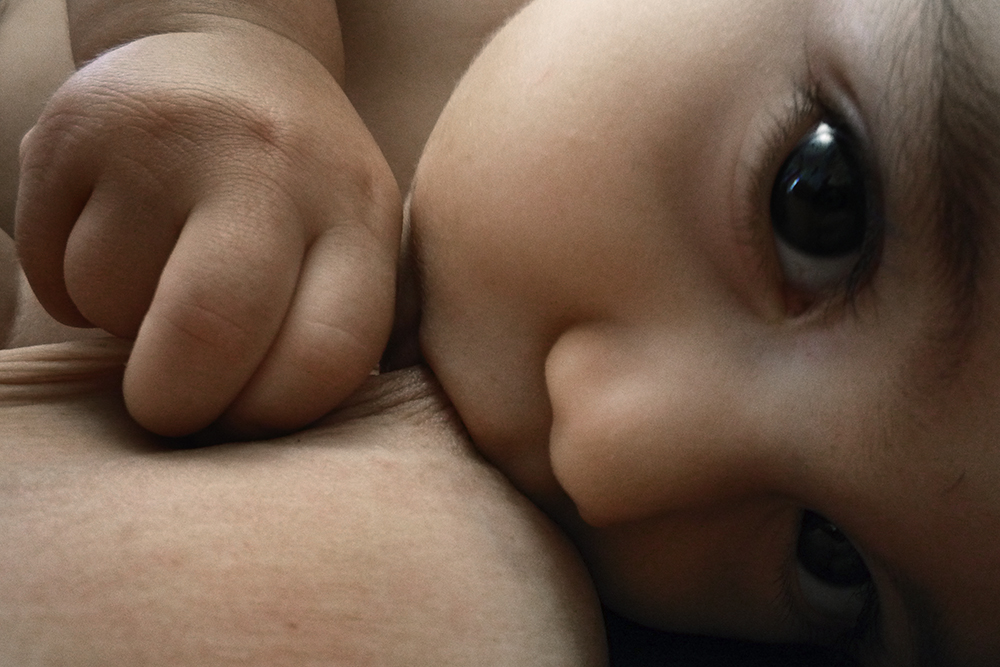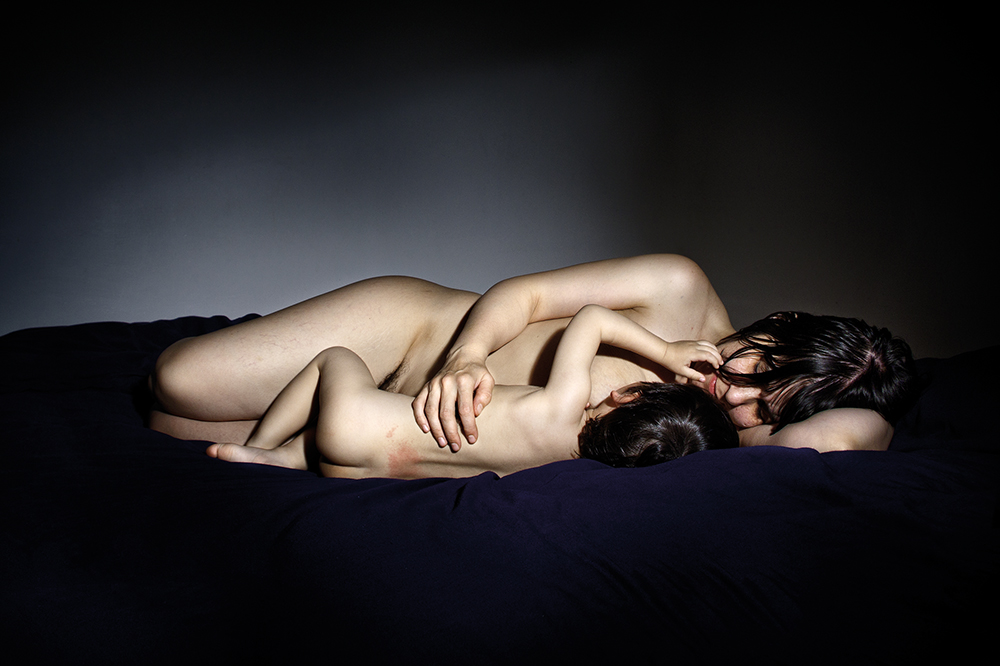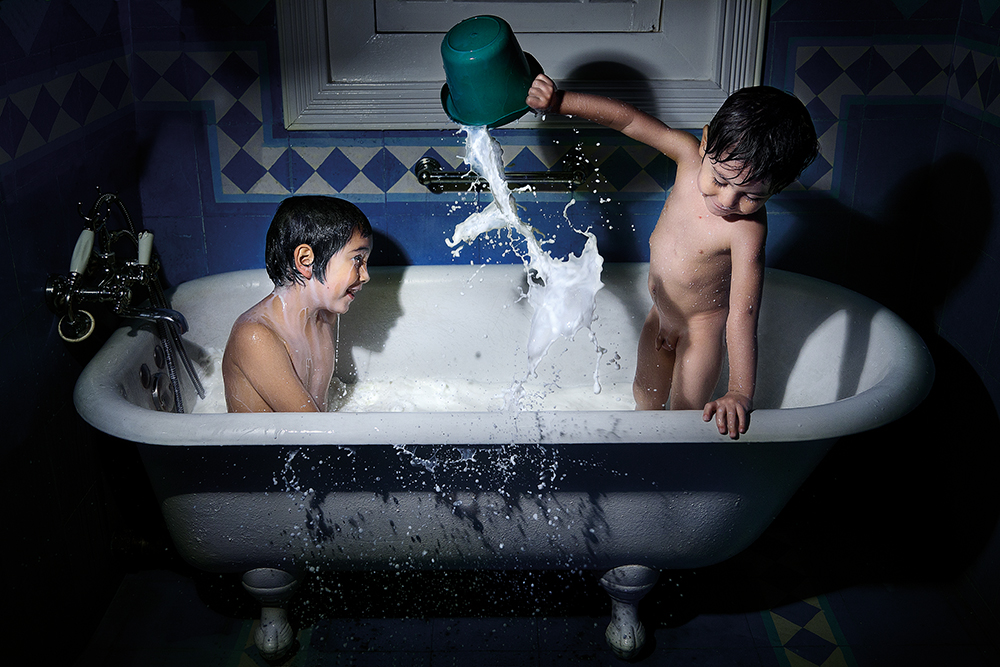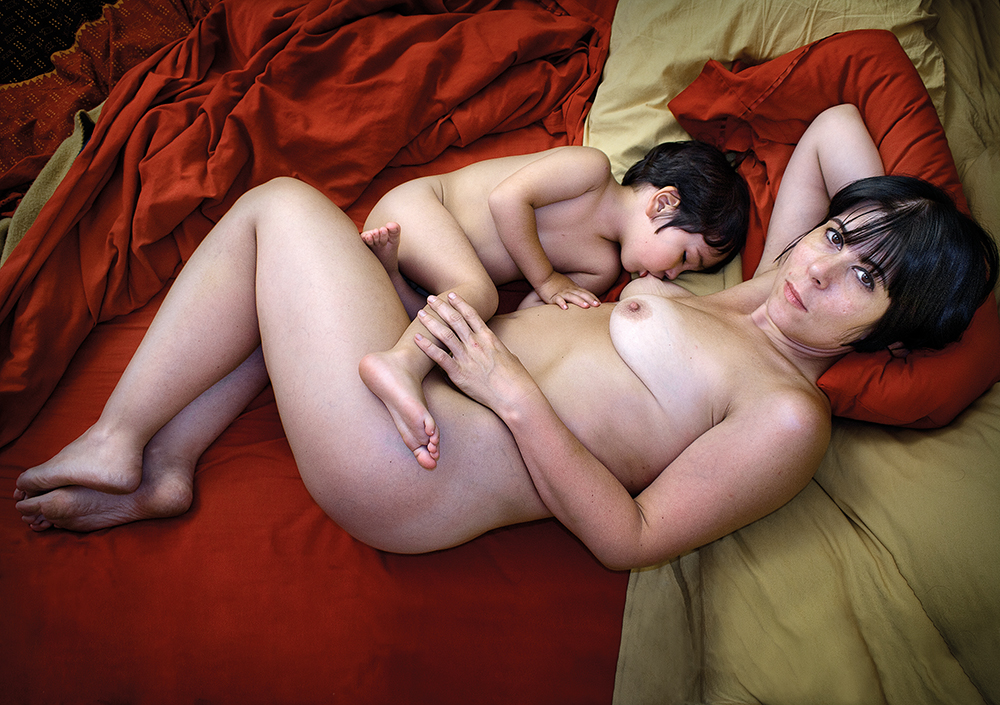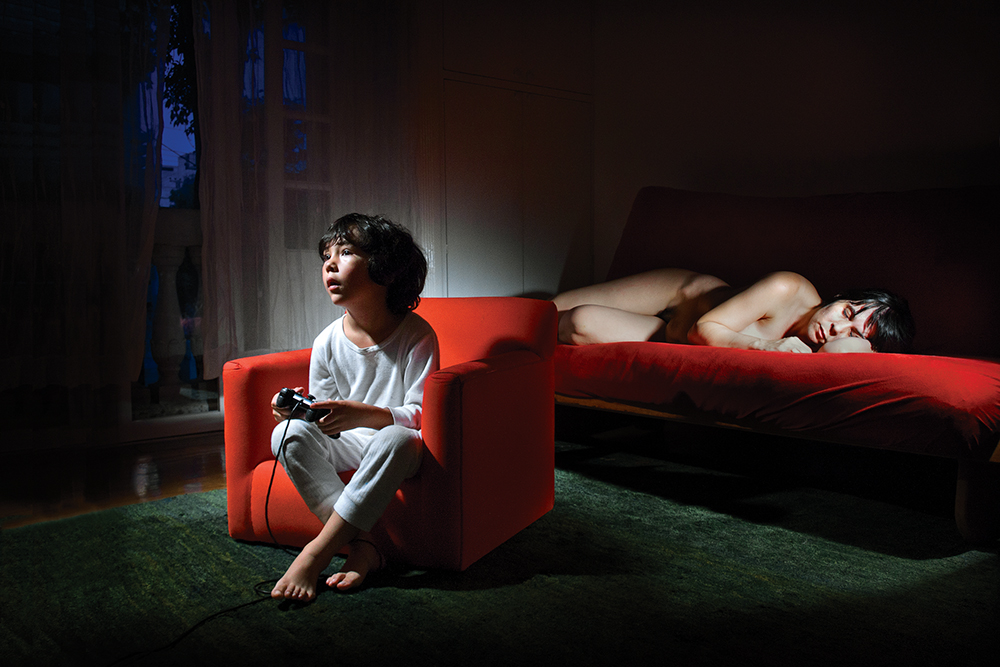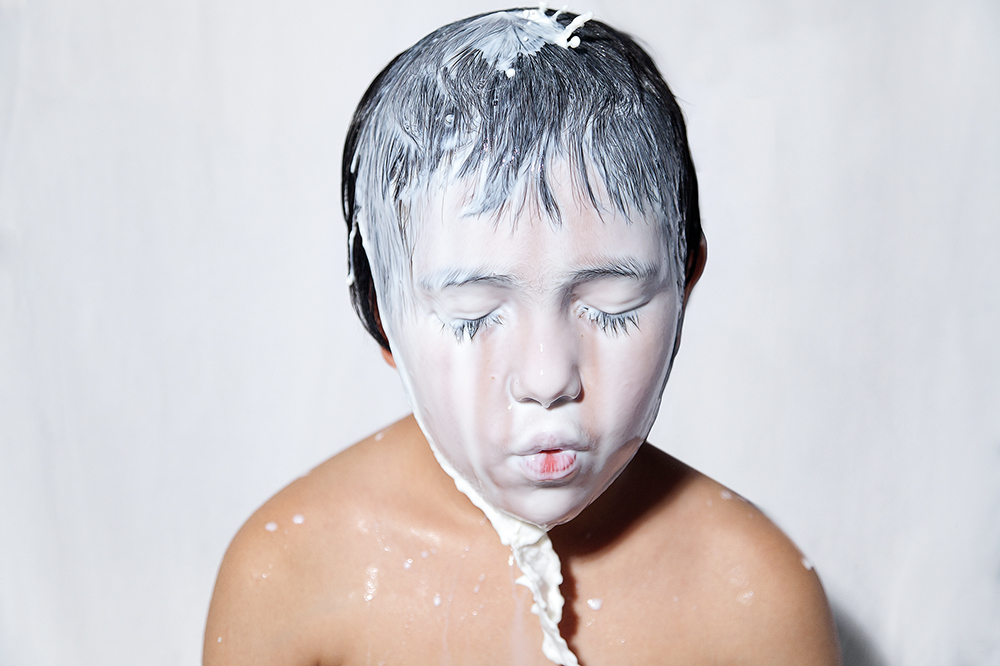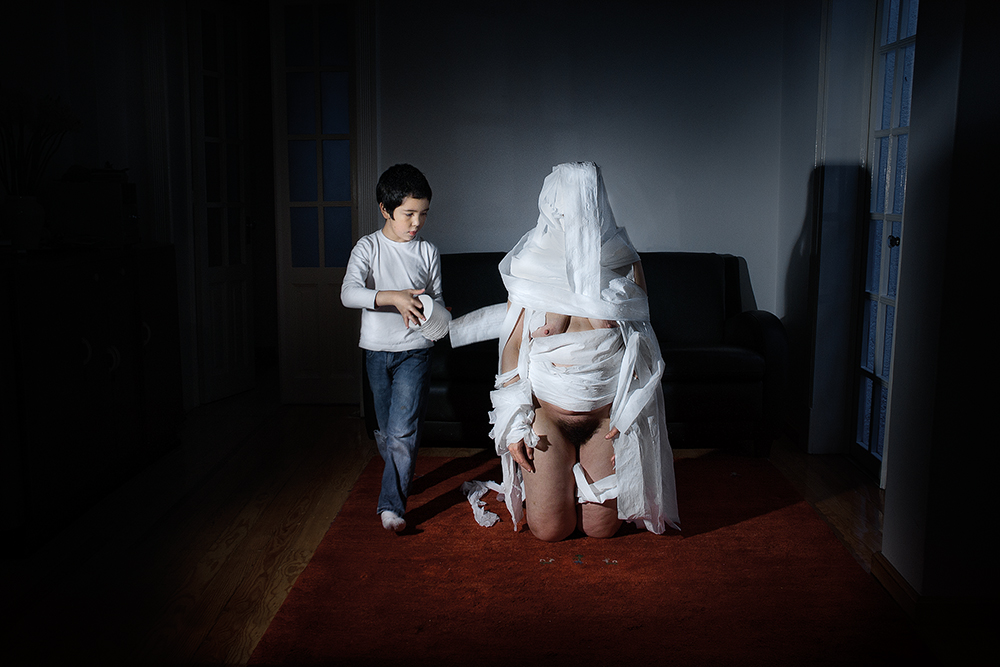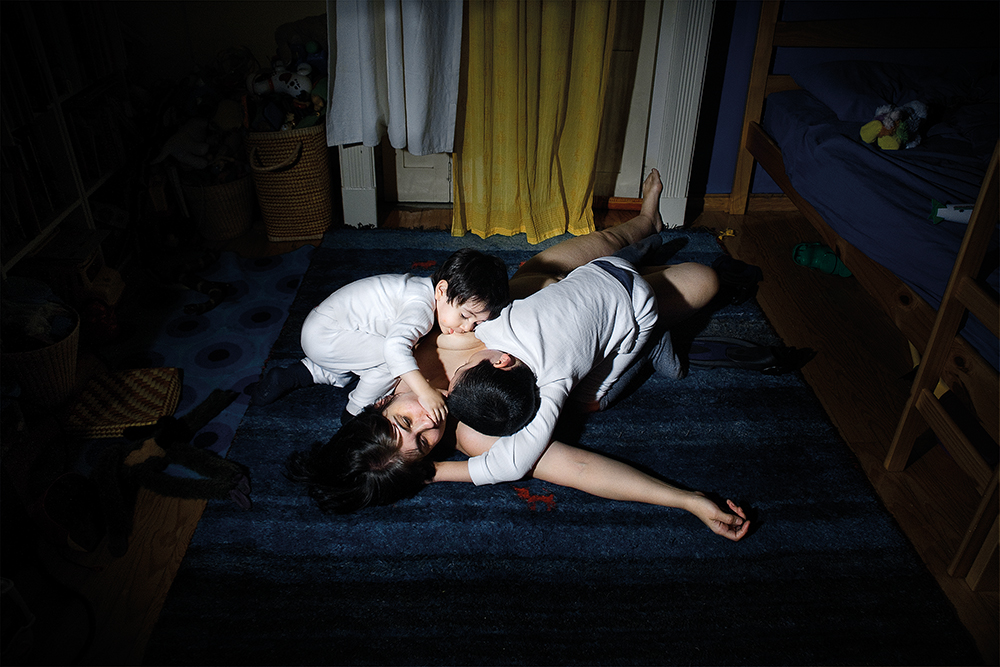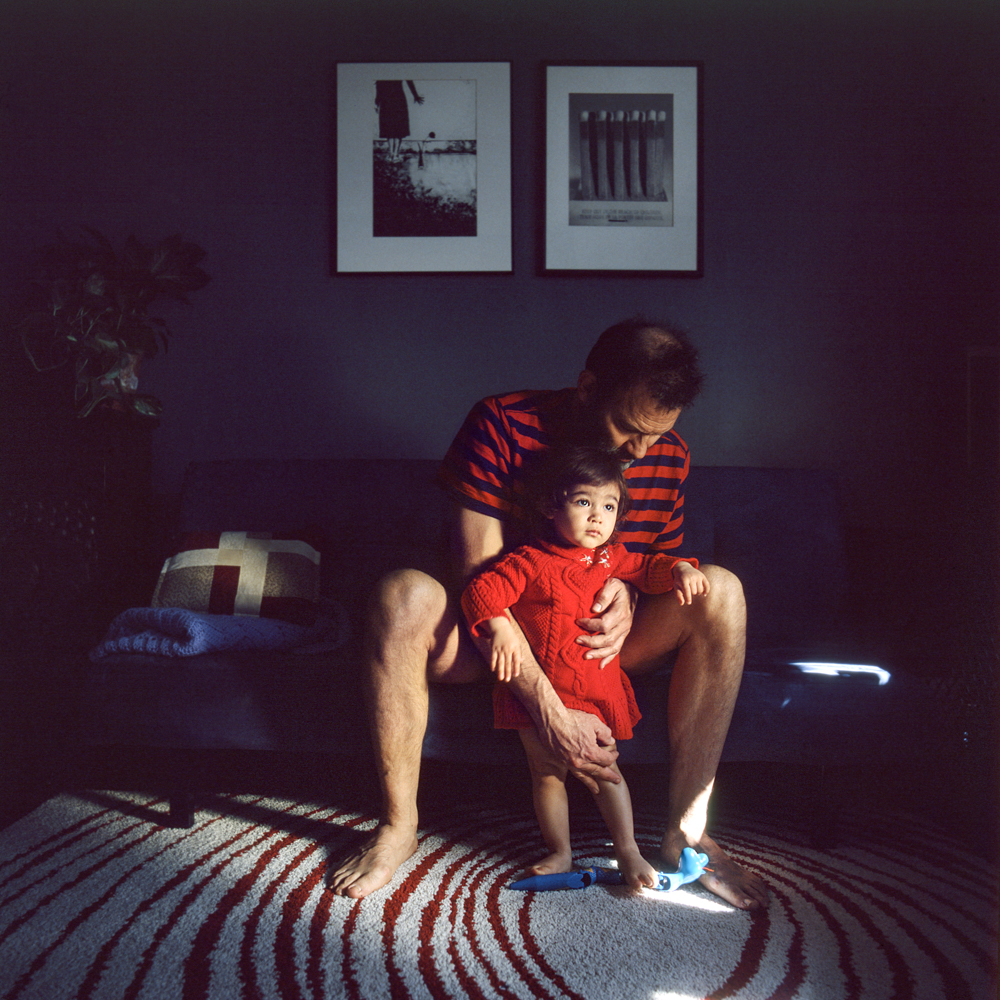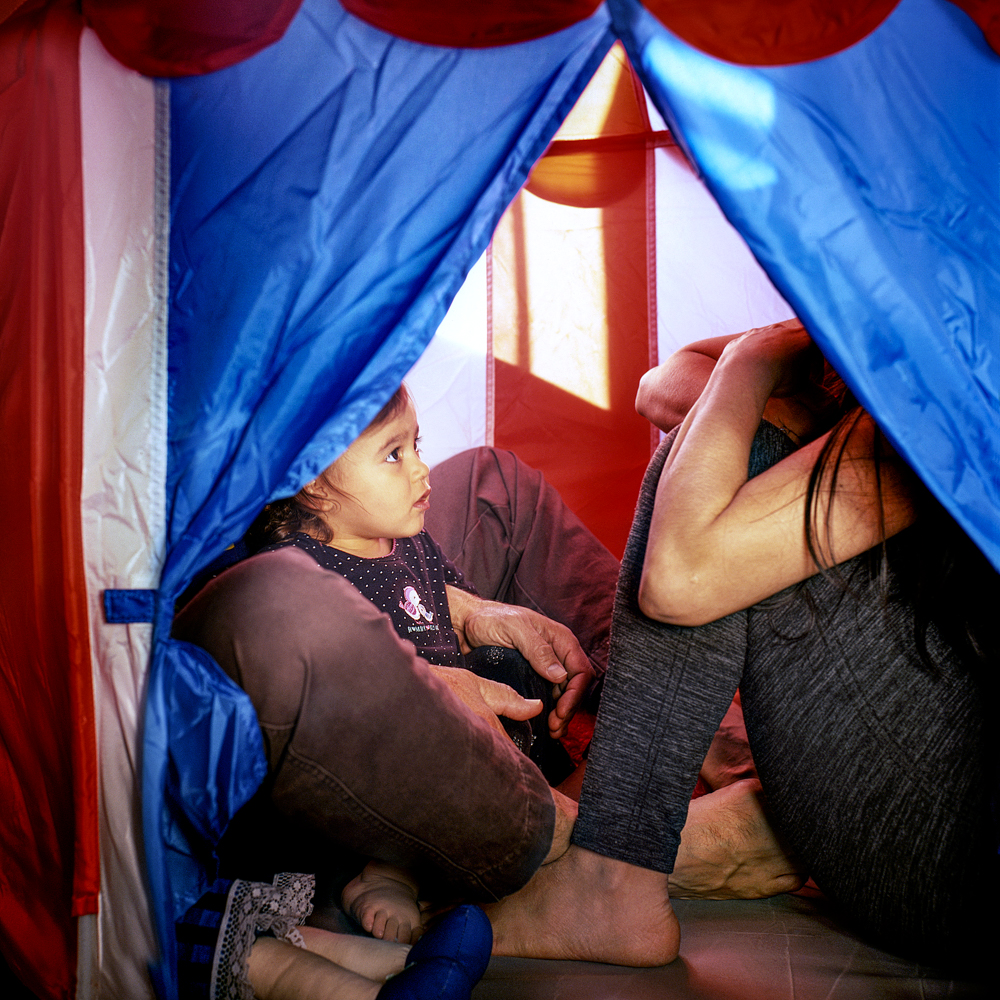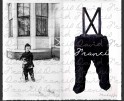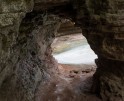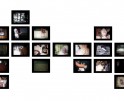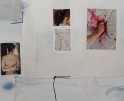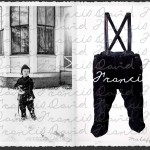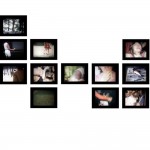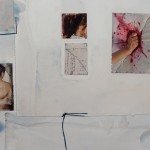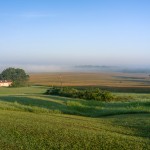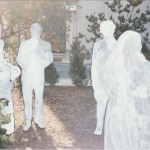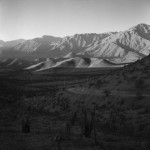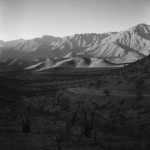Photographers on Photographers: Idalia Vasquez in Conversation with Ana Casas Broda
For the last days of summer we are re-running some posts from last year!
The first time I came across Ana Casas Broda‘s work was after a photo portfolio review. I had the opportunity to have the great Mexican photographer Yael Martinez review my portfolio. After the review, He sent me a list of photographers whose work he thought would interest me. Among them was Ana’s work. When Lenscratch contacted me to do an interview, I immediately thought that I wanted to interview a woman, a Latina, someone living outside the USA. Ana’s work came to mind. This was perhaps because she is a mother and I am too, or perhaps because her work was etched in my subconscious. Her work interests me because of her aesthetics and how she approaches the subject of the body. In her latest book, Kinderwunsch, she addresses motherhood and the desire to become a mother after undergoing fertility treatments for five years. Her work has many intriguing elements, such as time, desire, the body, and the tension that nudity can generate.
Her distinguished career as an artist, educator, editor, and curator gives Ana a unique perspective, a full view of the photography landscape, something that few artists can enjoy.

Ana Casas Broda is an artist, educator and editor based in Mexico City. She is co-director of Hydra + Fotografía, a platform founded in Mexico City in 2012 for projects related to the medium of photography. Casas Broda has exhibited widely, and her photobooks include Álbum (Mestizo A.C., 2000) and Kinderwunsch (La Fábrica Editorial: Madrid, 2014). For over thirty years, she has dedicated herself to coordinating projects on photography at venues such as Centro de la Imagen, Mexico and Círculo de Bellas Artes, Spain. Casas Broda has curated exhibitions in Argentina, Austria, the Netherlands and Mexico. Since 2014, she has been co-director of Hydra, a platform for generating projects related to photography, based on reflection, dialogue and collaboration between people, associations, artist.
Follow Ana on Instagram: @anacasasbroda
Idalia Vasquez: Tell us about growing up in Mexico. You were born in Spain, but grew up in Mexico, right?
Ana Casas Broda: My mother is Austrian, from Vienna; my father is from Spain, from Andalusia. My parents met in England and lived in Granada, where I was born, but they later left for Vienna. My first years were spent between Austria, New York, and Spain. Around the age of nine, I came to Mexico with my mother. My mother is an important research ethnologist at the National University of Mexico. In 1989, I returned to Vienna to work on my project Album, the story of my grandmother. I lived for a few years between Spain and Vienna, and then I spent extended periods caring for my grandmother in Vienna. In 1994, I returned to Mexico and started working with the Centro de la Imagen when it was inaugurated. I combined my work there with periods of time taking care of my grandmother till she died in 2002. I oversaw the educational program until 2008, building a program with over three hundred workshops per year at every level of learning, from beginning photography to specialized seminars in various fields. Subsequently, I led the Contemporary Photography Seminar at Centro de la Imagen until 2015. Around 2012, Gerardo Montiel Klint, Gabriela González Reyes, and I co-founded Hydra, a platform created to generate photography-related projects.
IV: What brought you to photography?
ACB: Since I was a child, I have had an interest in drawing and the arts. After finishing high school, I studied painting and photography simultaneously. Photography completely captivated me, and after two years, I left my painting behind. My grandmother was a major influence in my development, and the members of my family circle in Austria were very progressive thinkers. While I was studying photography, Manuel Álvarez Bravo came to the school looking for an assistant, and I worked as his assistant for a while. From there, I decided to start the Album project that I worked on, with breaks, for the next 14 years. I did the first series in Vienna from 1988 to 1992. I started playing with photographs from my childhood and images that I was creating at that time. Years later, I received a grant to publish the book.
IV: Tell us a little about your book Album.
ACB: If I were a novelist, I would choose the first person as the narrator. This is something very nice that a student of mine once said. In the case of Album, my grandmother’s story, I was given a deeply interesting story, as my grandmother had photographed her entire life and had kept every document, self-portrait, and all possible records, narrating her whole life. Her book is full of her diaries, my diaries, her self-portraits, and my photos. It is my story but, in part, it was given to me to be told through a narrative, which is what I like the most. I have always worked in book form because I see my work as a process. I know that when I start a book, I do not know where it will end, nor do I know where it will take me. I see it as a path that I voluntarily decide to immerse myself in, knowing that I do not know its destination. That, for me, is what makes it interesting. The format of the book allows me to share that same process with the reader.
IV: Tell us a little about your most recent work, Kinderwunsch. How did it begin? What is it about, and where did the inspiration come from?
ACB: I spent five years undergoing assisted fertility treatments. It was a challenging time, and experiencing this vision of the woman’s body through medicine is strange. It coincided with the period when Hollywood actresses were realizing that they had lost their opportunities to be mothers. There were childbirth broadcasts all day in the media, and I became an expert in childbirth and cesarean delivery. The desire for motherhood and the contradiction of not being able to fulfill it were harsh.
We finally succeeded, and I had my son Martin when I was 38 years old. I had been taking photos, but not with the intention of a project. At some point, I took a picture of myself breastfeeding my son, and when I saw it, I was surprised by the tension in the image. My son looked too big to be breastfeeding, and I looked kind of sexy. I felt this was something I needed to explore. I fully immersed myself in the project and, simultaneously, we decided to have a second child. This time, I portrayed the entire process without pause. I took pictures of everything: Martin, the fertility process, the pregnancy, and how my body was changing. I was impressed with how the medicine had progressed. Unlike during my first pregnancy, we could now see our internal organs as 3D images and videos. I began to see the relationship between the image and the body, and this interested me a lot. The image, in that sense, in its transformations, turns our way of seeing ourselves inward and understanding ourselves makes us change.
IV: In Kinderwunsch you work with performative actions, how did you start working in this way?
ACB: I have always worked with actions; I create a situation and let things happen. I conceive a scenario to provoke moments. Photography allows you to think about situations and to let something happen. It was clear to me that there was no division between working and being a mother. Photography allowed me to be present. For me, photography is an act of love; it is an act of affection. I discovered this while working on Album. The act of looking at someone is an act of awareness, of being present. After around two years, I got tired of of taking everyday pictures, so I decided to set up the lights, and then I undressed and my children threw themselves on me. With a self-timer, I captured what was happening. In the first images I took with my children, I felt something strange, something dwelling between affection and drowning. These photographs opened the doors to something fascinating that I continued to explore.
IV: What reactions has the project had?
ACB: My work is psychologically dense, because I decided to make motherhood my job. These images generate quite different reactions. It is rare that the same work arouses such contradictory responses. For me, it has to do with the fact that we are all children and that the space of early childhood is departed without a word. It is the same when you have children. You do not even remember. You do not sleep; everything is physical. It is such an intense tangle and so contradictory. My perception is that this period of early childhood, both for children and for parents, remains in a very strange place in the unconscious. I did not want to take photos only of the beautiful or the depressing, but it is complicated.
IV: Your work starts from a feminine gaze, searching for identity through the body. Could you speak a little about the gaze toward the body in your work?
ACB: The relationship between body and identity is natural to me. Motherhood is a physical experience; affection is linked to the body. I am one of the characters in the scene, and to be part of the scene, I must be present. This allows me to observe that person, which is me, from an outside view. This implies speaking from the inside, while at the same time being able to have distance. Some people tell me that I am showing
too much of myself, but I do not feel that you know me more by seeing me naked three days after giving birth. The state of the body speaks of many things that are not necessarily intimacy or truthfulness. It is a natural state. And in the case of Kinderwunsch, how can we talk about motherhood without talking about the body?
In Libros de Dieta, making myself a subject was a voluntary act. I needed to see my body to feel myself in it, and the act of showing it was a curatorial act in turning my body into a subject.
IV: What is next?
ACB: I always combine my work with organizing photography-related activities, such as seminars, workshops, meetings, and conferences. In 2012, I co-founded Hydra, a platform created to generate photography-related projects. What I have done in Hydra has changed my existence. We have been running the photobook program for three years, with editors and students from all over the world. It lasts eleven months, and I have invited all the editors I have wanted to work with. We have published 28 books in two years. My whole idea of the photobook and the way to produce work has changed. I am working on new processes of work creation and on international collaboration, generating more expansive production projects.
I think the process of making a book, like any other artistic process, requires an approach to materiality, the process of working on the book itself, and receiving feedback. These tools help you imagine and visualize your piece to conceptually advance an idea. Photographers used to have the problem that they paid the editor, and the editor was then the one who made the decisions.
The Photobook Incubator, created in Hydra, has allowed me to see how authors transform, like I did, in the process of making a book at their own pace and in their own form. To learn how each editor works. Some make large edits, other small ones, some work with designers, others do not. Now, we are also seeing hybrid productions. Being able to have all this information has also changed my own way of working.
The photobook is a support, but it has had many circulation problems. Books are everywhere, but they do not circulate. Many questions still surround the medium, and this is a challenge for me. At Hydra, we are continuously working on them. What follows is collaboration and international dialogue.
IV: How do you see the evolution of contemporary Latin American photography?
ACB: Latin American photography is incredible; it is more alive than ever. There is an extraordinary level of artistry; there is great potential.
In recent years, I have been fortunate to travel throughout Latin America, and I have maintained contacts in different countries. I consider that each country has its own identity; each country has a particular bias related to its own history. A series of specific problems remains very much alive in each Latin American country.
Social networks have provided the possibility of a more outward way of seeing. This has promoted the need to create a Latin American identity, which I consider very healthy. I perceive a conflict in the validation circuits that generate the problem of producing repetitive aesthetics. However, it is exciting to serve as a juror in many competitions and to see that important calls for artists are changing. The competitions are open to new narratives. Many photographers in Latin America are speaking from their own vision and having international success, and they have achieved this by moving solely through networks and platforms.
IV: How do you maintain a long-term creative practice?
ACB: I do this by always staying in constant doubt. For me, the important thing about art is that it allows you to question everything at all times. The fundamental thing is that art is related to life and does not become a formula; rather, it allows you to find ways to ask yourself questions and to let the work rise and lead you to places you did not know before. The work becomes independent of you, and you take byroads that you did not imagine. If one can achieve this without getting stuck in repeating some kind of formula, it is a great privilege.
IV: What lessons had you learned? and what tips do you have for young photographers?
ACB: The most important thing for me is finding the nature of what each author wants to say. You should ask yourself many questions from many places in the same work. What do you expect with the job? Are you waiting to enter a circuit? What kind of aesthetics are influencing you? Be very honest and realize your uniqueness as a person, because the more individual you are, the more universal your work becomes. In the end, we are all very similar. Some issues are not universal, but, in general, human emotions are very similar.
Idalia Vasquez is a Colombian-born, Philadelphia-based photographer. Her photographic work explores the migrant sentiment and identity, combining factual and fictional re-imaginings of the experience. She studied graphic design in Bogota and worked in advertising in Bogota and Quito, Ecuador, before moving to the U.S. Idalia holds a BFA in photography from College for Creative Studies, Detroit, MI. Currently, she lives in Philadelphia with her husband and daughter and is an MFA candidate in Photography at Tyler School of Art and Architecture at Temple University.
Follow Idalia on Instagram: @idaliavasquez
Posts on Lenscratch may not be reproduced without the permission of the Lenscratch staff and the photographer.
Recommended
-
The 2024 Lenscratch 1st Place Student Prize Winner: Mosfiqur Rahman JohanJuly 22nd, 2024
-
Ellen Mahaffy: A Life UndoneJuly 4th, 2024
-
Julianne Clark: After MaxineJuly 3rd, 2024
-
Kaitlyn Jo Smith: Super8 (1967-87, 2017), 2017June 30th, 2024
-
Katie Prock: Yesterday We Were GirlsJune 27th, 2024

